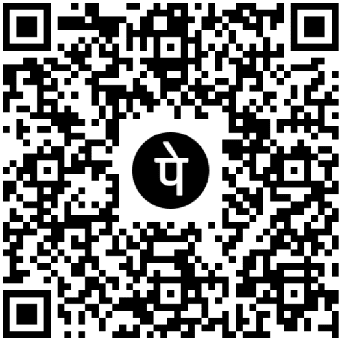Read more »
|
Tea is one of the most popular drinks
in the world. You make it by pouring hot water over the dried leaves
of a tea plant. For centuries people believed that
teas could cure illnesses, they used it as medicine.
Today scientists know that tea contains chemicals
that prevent cells from dying. Most teas have caffeine in
them, a substance that makes you feel more
active. Some people have problems drinking tea because it can cause sleeplessness. Tea plant Tea comes from the leaves and buds of tea plants. Wild plants can be up to 9 metres high but on tea plantations they are cut back to a bush of about a metre in height so that workers can pluck the leaves easily. The plant produces pointed, leathery dark leaves, small white flowers and seeds that look like hazelnuts. It takes a plant three to five years before is ready for plucking. A plucker can harvest about 20 kg of tea a day. On large tea plantations the leaves are harvested by machines, but the quality of tea is higher when the leaves are hand-plucked. Types of tea The most common types
of tea are black and green tea. They come from the same plant but are processed differently. Workers take the leaves and spread them
out on shelves where they can dry. Next, they
are rolled and broken into pieces and put into a room where they absorb oxygen.
Chemical reactions change the taste and character of the tea. Finally ,
the leaves are dried with hot air until they turn brownish-black. Most black
tea comes from Sri Lanka, Indonesia and eastern Africa. To make green tea, workers put
the freshly picked leaves into a steamer, which keeps them green. Then they are crushed and
dried in ovens. Japan is the biggest producers of green
tea Black tea is brewed by
pouring water over a teaspoon of tea. The tea should soak for
three to five minutes before you drink it. Green tea should be left in water
longer. Instead of putting tea leaves into a pot
people often put tea bags into a cup. History People first drank tea in
China about 5000 years ago. Originally it was used as a medicine,
then as a daily drink. It spread to Japan in the 3rd century A.D. Dutch and
Portuguese traders brought tea from eastern Asia to
Europe in the 1600s. In 1657 the beverage was
sold for the first time in coffee houses
in Great Britain. When the English started a tradition of tea drinking in the
afternoon it became England’s national drink. In the 17th and 18th centuries tea spread to
British colonies overseas. In 1767 Great Britain placed a tax on
tea imported by American
colonists. During the Boston Tea Party of 1773 they were so angry that
they threw a ship full of British tea into the harbour to
protest British rule. Two years later the American
Revolutionary War started. Today about 3.3 million tons of
tea are produced. India, with its famous tea growing regions like Darjeeling
and Assam, and China produce about half of the world’s tea. It
also grows in many other parts of Asia, especially in Sri
Lanka and Indonesia. In the course of time growing tea has spread to
countries in Eastern Europe, Africa and South America. |
Trà là một trong những đồ uống
phổ biến nhất trên thế giới. Bạn thực hiện bằng cách đổ nước nóng lên lá khô
của cây trà. Trong nhiều thế kỷ, người ta tin rằng trà có thể chữa được bệnh
và dùng nó làm thuốc. Ngày nay các nhà khoa học biết rằng trà có chứa các
chất có tác dụng ngăn cản tế bào chết đi. Hầu hết các loại trà đều có chứa
caffeine, một chất khiến bạn cảm thấy năng động hơn. Một số người gặp khó
khăn khi uống trà vì nó có thể gây mất ngủ.
Trà có nguồn gốc từ lá và nụ của cây trà. Cây dại có thể cao tới 9 mét nhưng trên các đồn điền chè, chúng được cắt thành bụi cao khoảng một mét để thợ có thể tuốt lá dễ dàng. Cây tạo ra những chiếc lá nhọn, sẫm màu, những bông hoa nhỏ màu trắng và hạt trông giống như quả phỉ. Cây phải mất từ 3 đến 5 năm mới sẵn sàng để thu hoạch. Một người hái chè có
thể thu hoạch khoảng 20 kg chè mỗi ngày. Ở các đồn điền chè lớn, lá được thu
hoạch bằng máy nhưng chất lượng chè sẽ cao hơn khi hái lá bằng tay. Các loại trà phổ biến nhất là trà
đen và trà xanh. Chúng đến từ cùng một nhà máy nhưng được chế biến khác nhau. Công nhân lấy lá và trải chúng
lên kệ để chúng có thể khô. Tiếp theo, chúng được cuộn lại, bẻ thành từng
mảnh rồi đưa vào phòng để chúng hấp thụ oxy. Phản ứng hóa học làm thay đổi
hương vị và đặc tính của trà. Cuối cùng, lá được sấy khô bằng không khí nóng
cho đến khi chuyển sang màu nâu đen. Hầu hết trà đen đến từ Sri Lanka,
Indonesia và Đông Phi. Để pha trà xanh, người thợ cho
những lá trà mới hái vào nồi hấp để giữ cho trà xanh. Sau đó chúng được
nghiền nát và sấy khô trong lò. Nhật Bản là nước sản xuất trà xanh lớn nhất Trà đen được pha bằng cách đổ
nước lên một thìa cà phê trà. Trà nên ngâm từ ba đến năm phút trước khi uống.
Trà xanh nên được ngâm trong nước lâu hơn. Thay vì cho lá trà vào ấm người ta
thường cho túi trà vào cốc. Người
ta uống trà lần đầu tiên ở Trung Quốc khoảng 5000 năm trước. Ban đầu nó được
dùng làm thuốc, sau đó dùng làm thức uống hàng ngày. Nó lan sang Nhật Bản vào
thế kỷ thứ 3 sau Công nguyên. Các thương nhân Hà Lan và Bồ Đào Nha đã mang
trà từ Đông Á đến châu Âu vào những năm 1600. Năm 1657, đồ uống này được bán
lần đầu tiên tại các quán cà phê ở Anh. Khi người Anh bắt đầu có truyền thống
uống trà vào buổi chiều, nó đã trở thành thức uống quốc gia của nước Anh. Vào
thế kỷ 17 và 18, trà lan sang các thuộc địa của Anh ở nước ngoài. |







